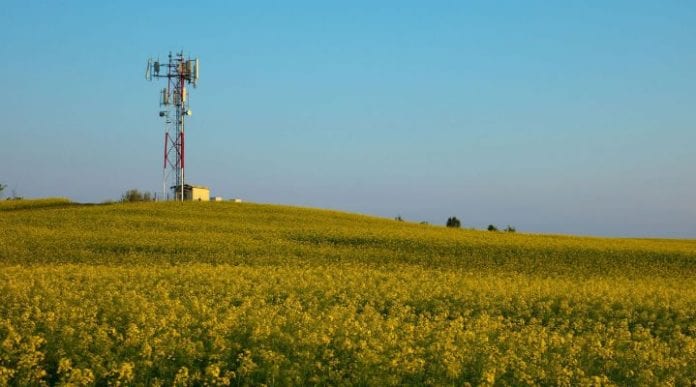Want to put cellular coverage maps to the test? Take a trip out west
Mobile operators are good at providing coverage maps with lots of bright colors that show extensive coverage across the U.S. In their advertising, they usually flash the maps up for a few seconds, giving the impression that wherever you go, you will have cell service. And even if you do not have LTE, surely you will have 3G or even good old 2G?
Well, no. Not really. This summer, we took a flying-driving vacation to Seattle and then drove through Washington, Idaho, Montana and Wyoming. We visited Yellowstone National Park (well worth the trip) and Grand Teton National Park (very well worth the trip!). For those geographically challenged, these national parks are in the northwest corner of Wyoming, right on the border with Montana and Idaho. Interesting useless fact for the day: Yellowstone was the first national park, created in 1872 by President Grant.
No surprise that there are not a lot of cell towers inside Yellowstone or Grand Teton. Since buffalo do not generally text or use Facebook, they have no need for cell towers. The buffalo are, however, excellent at holding up traffic in Yellowstone; we experienced an hour-or-so buffalo jam when leaving the park. To see a park ranger “nudge” buffalo off the road with an SUV is quite something. So coverage inside the parks is very spotty at best. There was some Wi-Fi at the visitor centers, etc., but out on the trails, not much.
But what was surprising was the lack of coverage between Yellowstone and Grand Teton. For two nights, we stayed at a lodge (with RVs, camp sites and cabins) between Yellowstone and Grand Teton, right on the John D. Rockefeller Jr. Memorial Highway. (He was responsible for the way much of the Grand Teton park looks today.) It was a great location for both parks and there was Wi-Fi service.
Right. We checked in and went to the cabin. No TVs in the cabins. (It’s a tradition: if you want entertainment, look at the wildlife outside your window.) And no cell service, at all. Nothing – no 2G, 3G. Not a hint of a bar.
So we tried the Wi-Fi in the main lodge. Nothing. Apparently, it only works in the morning and only slowly when it does work. Sure enough, next morning, we have a few kilobits per second of service for about 30 minutes, just enough to send a few emails saying “Hey, we have no cell service so don’t bother replying.” It seems the lodge uses a satellite Internet service (a slow one) and either they lose connection during the day or the service is simply too slow to deal with the demand. Either way, no internet.
The lodge gets around this by offering free, unlimited long distance calls to anywhere in the U.S. Good old landline telephone to the rescue. So we called the kids and told them where we were in case of an emergency. Not that we could do anything to help, since we were a few thousand miles away with no internet access.
Cell service started about 10 miles down the road at one of the visitor centers in Grand Teton park. And that was sporadic. Other than that, we were cut off.
This is a true vacation – no internet, email, Snapchat, Instagram, Facebook, stuff. We hiked, took photos and looked at big mountains. We saw beaver, buffalo and deer. And I do not think anyone noticed we were really off the grid.
So next time you are driving down the New Jersey Turnpike or Dallas Tollway and complaining about the holes in cell service, just remember there are places where there is truly nothing. And that may be a good place to get a break.

Iain Gillott, founder and president of iGR, is an acknowledged wireless and mobile industry authority and an accomplished presenter. Gillott has been involved in the wireless industry, as both a vendor and analyst, for more than 20 years. The company was founded in 2000 as iGillottResearch in order to provide in-depth market analysis and data focused exclusively on the wireless and mobile industry. Before founding iGR, Gillott was a group VP in IDC’s telecommunications practice, managing IDC’s worldwide research on wireless and mobile communications and Internet access, telecom brands, residential and small business telecommunications and telecom billing services. Prior to joining IDC, Gillott was in various technical roles and a proposal manager at EDS (now Hewlett-Packard), responsible for preparing new business proposals to wireless and mobile operators.
Editor’s Note: Welcome to Analyst Angle. We’ve collected a group of the industry’s leading analysts to give their outlook on the hot topics in the wireless industry.

